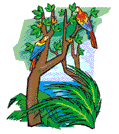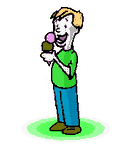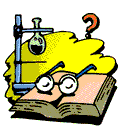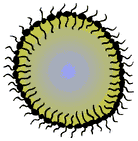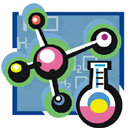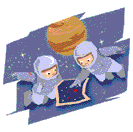Science
This category includes science lesson plans, printable worksheets, and other teaching material, activities, and resources. Topics include astronomy, biology, earth science, geology, physics, technology, weather, and other related subjects.
SCIENCE LESSONS AND WORKSHEETS
|
||
EARTH SCIENCE |
||
|
Earth Science LessonsLearn about science related to the planet Earth.
|
|
|
||
ANIMALS |
||
|
AnimalsLearn about animals including zoo, farm, endangered, and other types of animals. |
|
|
||
LIVING AND NON-LIVING THINGS |
||
|
Living and Non-Living ThingsA lesson on the characteristics and classification of living and non-living things. |
|
|
||
PLANTS |
||
|
Parts of a PlantLearn about the parts of a plant and the plant life cycle. Getting to Know the TreesStudents learn simple facts about trees.
Photosynthesis A lesson on the process known as photosynthesis. Plant Life Cycles Students learn the stages of the life cycle of flowering plants. Plant Processes Students learn basic plant processes, and needs of plants. Flowers and SeedsStudents will learn about flowers and seeds. Plants with SeedsStudents will learn about plants with seeds.
Seedless PlantsStudents will learn about seedless plants.
Cycles of Life: Water, Trees, Carbon, NitrogenStudents will learn how materials are recycled in nature.
How Plants Adapt to the EnvironmentLearn how plants adapt to the environment.
|
|
|
||
HABITATS AND ECOSYSTEMS |
||
|
What is a Habitat Lesson Learn about animal habitats science lesson. Ecosystems in NatureStudents will learn about ecosystems in nature.
Habitats and Niches in an EcosystemStudents will learn about habitats and niches in an Ecosystem.
Water EcosystemsStudents learn about water ecosystems. |
|
|
||
BIOMES |
||
|
Biomes Lesson Students research and read about biomes, and identify the six major biomes of the world by making biome mobiles. Exploring the Taiga BiomeLearn about the climate and characteristics of Taiga Biome.
The Blackland PrairieLearn about the Blackland Prairie ecosystem.
GrasslandsLearn about grasslands.
Life in the Deciduous Forest BiomeLearn about life in the deciduous forest biome.
Life in the Frozen TundraLearn about life in the frozen tundra.
The Desert BiomeLearn about life in the desert biome. |
|
|
||
THE RAINFOREST |
||
|
The RainforestLearn about the rainforest, and the plants and animals found there. |
|
|
||
CLASSIFICATIONS |
||
|
Classifications of Organisms A biology lesson on organism classification, including Kingdom, Phylum, Class, Order, Family, Genus, and species. Classifying AnimalsStudents will learn about classifying animals. |
|
|
||
ORGANISMS |
||
|
Symbiosis: Relationships Among Organisms Learn about symbiosis and the relationships among organisms.
|
|
|
||
MAKING A TERRARIUM |
||
|
Making A TerrariumStudents construct and maintain a model of a natural habitat and make observations. |
|
|
||
HABITAT BREAKDOWN GAME |
||
|
Game: Habitat BreakdownA game to help students understand how insects and organisms are impacted by factors essential to their survival. |
|
|
||
ENDANGERED SPECIES |
||
|
Endangered SpeciesAfter reading and discussing a science research prompt, students gather information about an endangered species and make a class presentation. |
|
|
||
THE FIVE SENSES |
||
|
The Five SensesA lesson and activity on the five senses: sight, hearing, smell, touch, and taste.
Writing with your SensesLearn and write about the 5 senses. |
|
|
||
HUMAN BODY |
||
|
The Human Body - Overview An elementary science lesson plan on the human body. Learn about the human body's organs, features, needs, and the importance of good health.
The Digestive System Students learn about the digestive system.
The Circulatory System A lesson plan on the circulatory system and the human body.
The Nervous System A lesson plan on the nervous system and the human body.
The Respiratory SystemStudents identify the features of the respiratory system. |
|
|
||
DNA |
||
|
DNAA lesson on DNA, or Deoxyribonucleic Acid, its purpose and structure.
|
|
|
||
THE SEASONS |
||
|
Seasons LessonAfter reading about the seasons, students will be able to identify defining characteristics of the seasons and create their own books based on these ideas.
WinterA lesson on winter, typical weather, and how it is distinguished from other seasons. |
|
|
||
|
||
DINOSAURS |
||
|
Dinosaurs: CarnivoresLearn about carnivorous dinosaurs, and the age of the dinosaurs.
Dinosaurs: HerbivoresA lesson on herbivore dinosaurs. |
|
|
||
LIGHT |
||
|
What is Light?Students learn about light, with this reading lesson on the different types of light.
|
|
|
||
GRAVITY |
||
|
Understanding GravityWhat gravity is, Isaac Newton's Laws of gravity, force, motion, and inertia. |
|
|
||
RECYCLING |
||
|
Why we RecycleWhy we recycle and what things we may recycle. |
|
|
||
THE FOOD CHAIN AND ANIMAL EATING HABITS |
||
|
The Food Chain and Animal Eating HabitsLearn about the food chain and animal eating habits.
Food Webs: Who Eats WhoAn overview of the levels of a food web, energy transfer from level to level, and the complexity of these interactions. |
|
|
||
ELECTRICITY |
||
|
ElectricityA lesson on the discovery of electricity by Benjamin Franklin to modern uses of electricity.
|
|
CELLS |
||
|
What is a Cell?A lesson on the structure, function, and parts of animal and plant cells.
|
|
|
||
CHEMISTRY |
||
|
Compounds and MixturesLearn about compounds and mixtures, and the difference between them.
Acids and BasesA lesson on the three different kinds of chemical substances. |
|
|
||
PHYSICS |
||
|
Atoms and Molecules A lesson on atoms and molecules. Balanced and Unbalanced ForcesA lesson on Isaac Newton's laws and balanced and unbalanced forces.
The Many Forms of EnergyA lesson and worksheet about the various forms of energy and how they work.
Newtons First Law of MotionA lesson about Isaac Newton's First Law of Motion.
Physical and Chemical ChangesLearn the difference between physical and chemical changes and how chemical reactions are described.
Sound WavesLearn how sound is created and how it travels.
Echoes and EcholocationLearn how echoes are created and how animals use echoes to communicate.
Pitch and Frequency of SoundLearn about two qualities of sound known as pitch and frequency.
Reflection and AbsorptionLearn how sound is reflected and absorbed.
Measuring the Loudness of SoundLearn about the volume of sound and how it is measured. |
|
|
||
PERIODIC TABLE: CHEMICAL ELEMENTS |
||
|
Chemical ElementsStudents learn about the periodic table, while identifying, naming, and interpreting chemical elements.
|
|
|
||
ARCHEOLOGY |
||
|
Archeology: Exploring the Past to Improve the FutureLearn what archeologists do and why.
|
|
|
||
SOLAR SYSTEM |
||
|
Solar SystemStudents will learn the makeup of the solar system including the sun, planets, and moons, and how it was formed.
Planet EarthFacts about the planet Earth.
MercuryFacts about the planet Mercury.
VenusFacts about the planet Venus.
Pluto, the DwarfFacts about former planet Pluto.
Planet JupiterLearn about planet Jupiter.
Comets, Asteroids, MeteoroidsLearn to differentiate between comets, asteroids, meteoroids, meteors, and meteorites.
Planet MarsLearn about planet Mars.
Planet NeptuneLearn about planet Neptune.
Planet SaturnLearn about planet Saturn.
The MoonLearn about the moon.
Planet UranusLearn about planet Uranus. |
|
|
||
SUN, MOON, AND STARS |
||
|
Sun, Moon, and StarsA lesson on the sun, moon, and stars.
Our Local StarLearn about the sun, our local star.
|
|
|
||
SPACE ADVENTURE |
||
|
Space AdventureA space adventure reading comprehension lesson. |
|
|
||
FAMOUS SCIENTISTS IN HISTORY |
||
|
GalileoThe life and theories of the famous scientist Galileo.
Sir Isaac NewtonThe life of famous scientist Sir Isaac Newton.
Charles DarwinThe life of famous scientist Charles Darwin.
Jane GoodallThe life of famous zoologist Jane Goodall.
The Wright BrothersThe life and inventions of the Wright Brothers.
Thomas Alva EdisonThe life and inventions of Thomas Edison.
|
|
|
||
TECHNOLOGY AND COMPUTERS |
||
|
RobotsA technology and computers lesson on robots.
|
|
|
||
BIOLOGY |
||
|
Cellular BiologyIn this lesson, we learn what cells are, their major components, and the functions of these organelles.
Current Events in BiotechnologyLearn what biotechnology is and how it applies to various concepts from our daily lives.
Genetics and InheritanceLearn what genetics are, how genes work and explore genetic inheritance of various traits.
KingdomsLearn the six different kingdoms and discussed some interesting characteristics of each kingdom.
DNA: The Alphabet of LifeAn overview of DNA structure and function with an emphasis on the application of DNA knowledge to human health.
Inheritance: It’s In the GenesAn introduction to DNA as the genetic material that is passed from one generation to the next, its location and form in the cell, and the genetic and environmental influence on physical traits in humans.
|
|
|
||
SCIENTIFIC METHOD |
||
|
Scientific MethodLearn what the scientific method is, how one conducts scientific experiments, and formulates theories based on the results.
|
|
|
||
ADDITIONAL RESOURCES |
||
|
AstronomyBiologyCommunityEnvironmentGeographyGeologyPhysicsWeather |
|
|
||
|
||
|
||
For more teaching categories, including English, math, and history, please see the InstructorWeb home page. |
||

